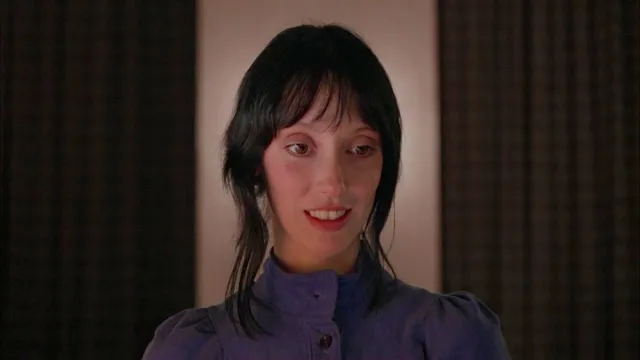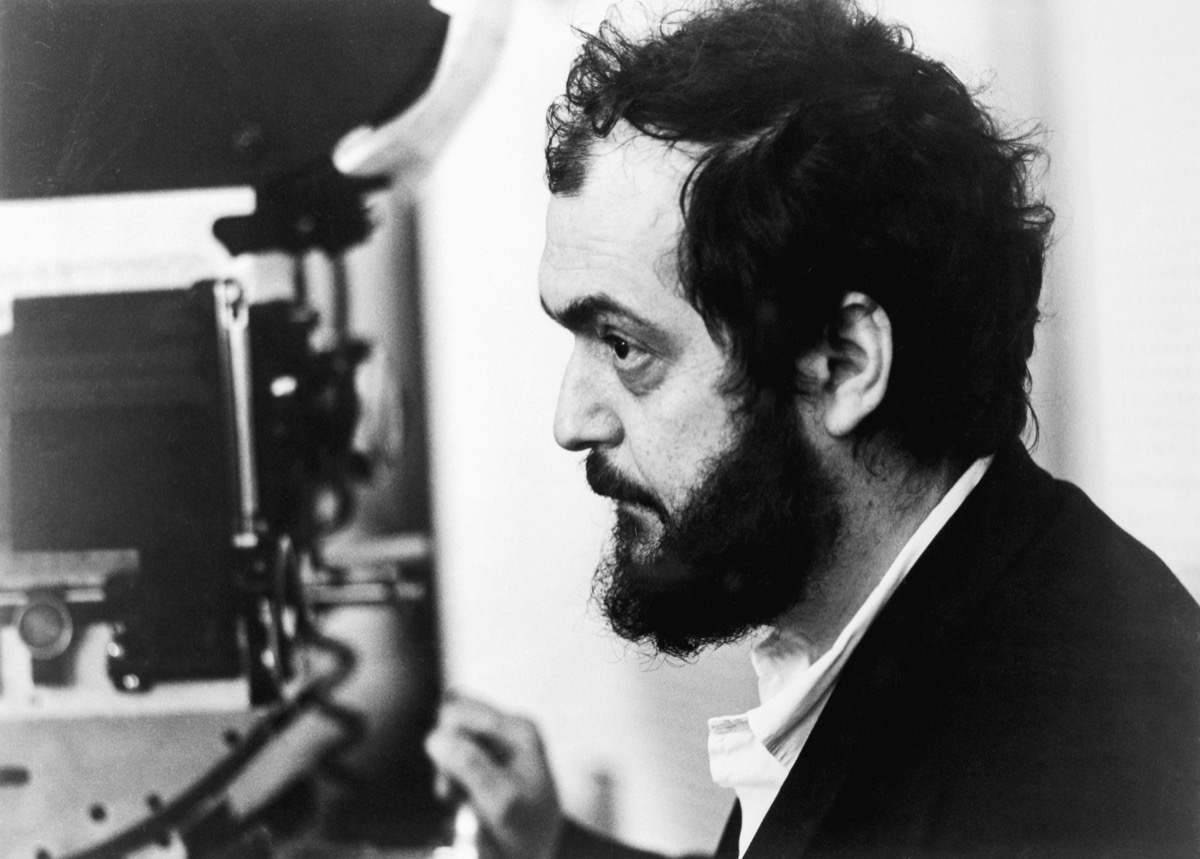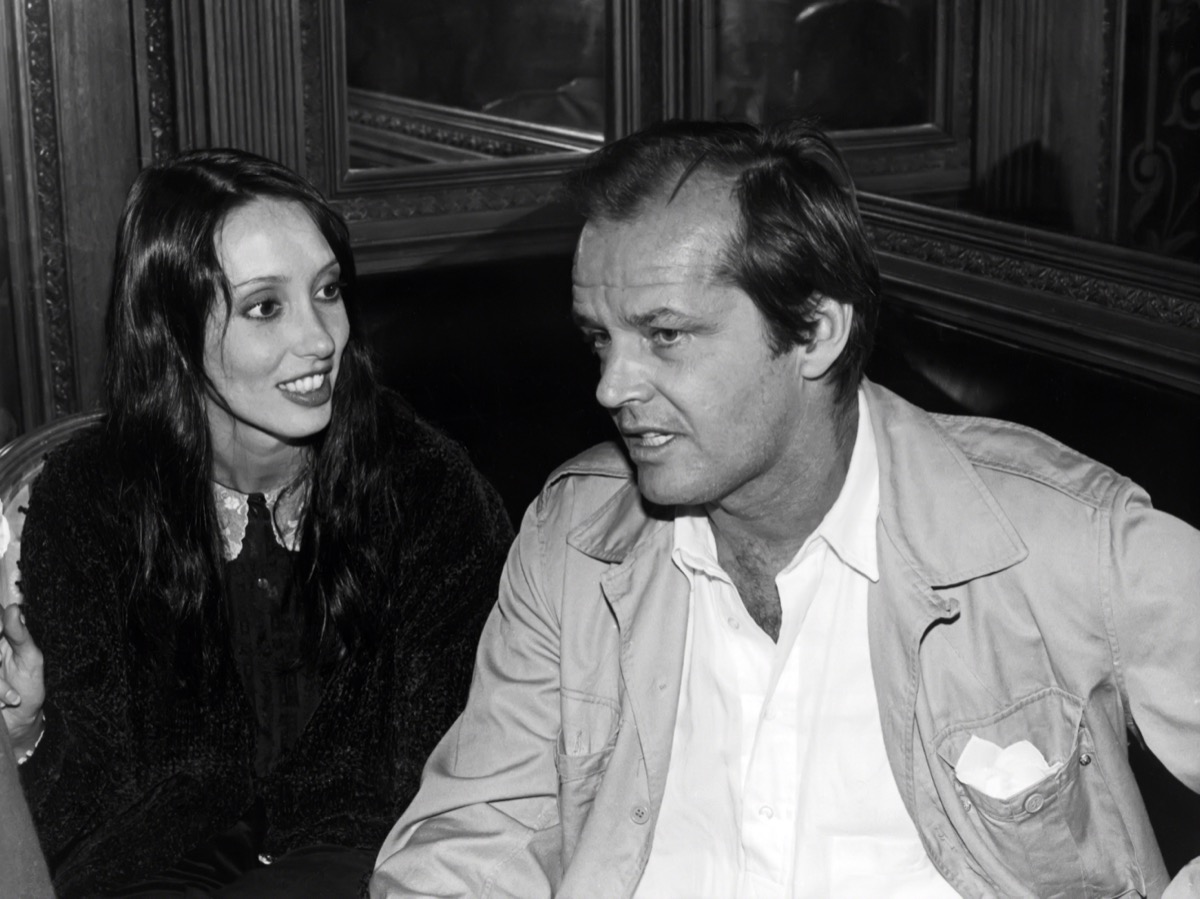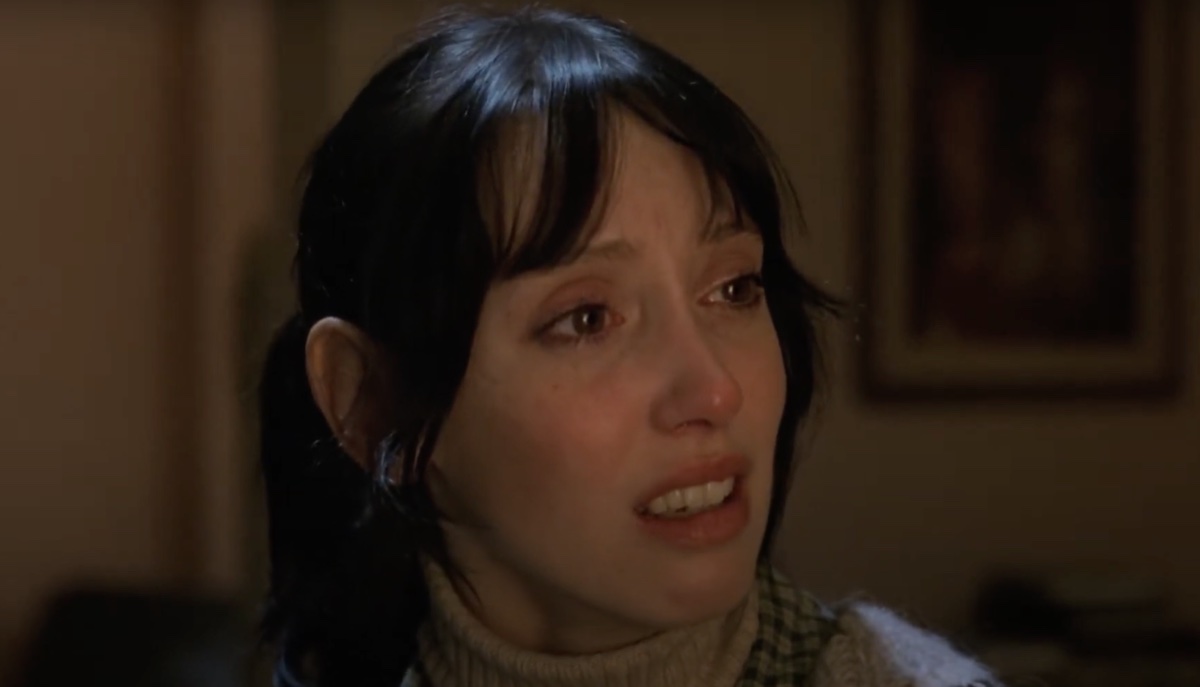“The Shining” Star Shelley Duvall Said Filming Was “Hell” Because of Stanley Kubrick

Shelley Duvall is best known for her performance as Wendy Torrance in Stanley Kubrick’s 1980 horror film The Shining, adapted from the Stephen King novel. For the depiction of the terrifying decline of a novelist who takes a caretaker position at an isolated hotel with his family and turns homicidal after they are snowed in, she and co-star Jack Nicholson endured 13 months of arduous shooting under the famously obsessive auteur. Duvall seemed to have gotten the worst of it—several accounts of The Shining detail how Kubrick exhausted, frightened, and intimidated the actor. Later, she said that making the classic with the filmmaker was “hell.” Read on to find out more.
RELATED: Dr. Phil Defends Controversial Shelley Duvall Interview: “I Don’t Regret What I Did.”
Kubrick instructed the cast and crew to mistreat Duvall.

The notoriously perfectionistic Kubrick used psychological manipulation to coax performances from his actors. When he learned Nicholson despised cheese sandwiches, for example, the director had him fed only cheese sandwiches for two weeks in order to unleash his inner demons, according to IndieWire.
But Duvall’s treatment was harsher. According to The Mirror, Kubrick instructed the cast and crew to isolate the then-31-year-old actor in order to push her to the brink—the director’s attempt to draw out a performance shot through with all-too-authentic stress, dread, and exhaustion.
As Nicholson remembered in the documentary Kubrick: A Life in Pictures, as reported by Cheat Sheet, as exacting as Kubrick was throughout the production, he was “a different director” with Duvall, punishing her for errors and berating her performance and suggestions in front of the cast and crew. “[She had] the toughest job of any actor I’ve seen,” her co-star said.
Yet that sympathy didn’t extend to Nicholson offering her comfort on set, as the director reportedly told the cast and crew not to offer Duvall any sympathy for what she was going through.
RELATED: Julia Roberts Was Bullied by Steel Magnolias Director: “We Hated Him,” Sally Field Says.
They filmed one harrowing scene 127 times.
As reported by The Mirror, Duvall later said that Kubrick “prodded” her further than she had ever been pushed before—and that included filming take after take of her scenes until the director was satisfied. That included one that ranks with the film’s most intense sequences, in which Nicholson’s character stalks her through the hotel and she attempts to keep him at bay with a baseball bat.
According to comments from Kubrick himself, recounted by Far Out Magazine, multiple takes were necessary “when actors [were] unprepared…You cannot act without knowing dialogue. If actors have to think about the words, they can’t work on the emotion. So you end up doing 30 takes of something. And still, you can see the concentration in their eyes; they don’t know their lines.”
For this sequence, however, Duvall didn’t have to do much more than look terrified of the man menacing her—which Kubrick made inevitable by subjecting her to the punishing psychological ordeal. “It was only with the greatest difficulty that Shelley was able to create and sustain for the length of the scene an authentic sense of hysteria,” Kubrick told his biographer Michael Ciment, as recounted by E! Online. “It took her a long time to achieve this and when she did we didn’t shoot the scene too many times. I think there were five takes favoring Shelley, and only the last two were really good.”
“We filmed that for about three weeks,” Duvall recalled to The Hollywood Reporter in 2021. “Every day. It was very hard. Jack was so good—so damn scary. I can only imagine how many women go through this kind of thing.”
According to a 2020 tweet from Guinness World Records, the baseball bat encounter holds the record for the second-most takes of a scene with dialogue—surpassed only by another scene from The Shining, a conversation between the young Danny Torrance (Danny Lloyd) and Dick Hallorann (Scatman Crothers) that was filmed 148 times.
The experience took a physical toll on Duvall.

The toll of Kubrick’s relentless pursuit of perfection was not solely psychological but also physical. As noted by The Mirror, filming sequences like the baseball bat confrontation would sometimes leave Duvall literally bloody (in that case, from gripping and swinging the bat for hours and hours). But the overall stress of the production had other consequences for her health.
According to Nicholson, as reported by Us Weekly, not only did the scene make her physically ill on the day, but later Duvall showed him clumps of her hair that had begun to fall out due to the prolonged stress.
“To wake up on a Monday morning, so early, and realize that you had to cry all day because it was scheduled—I would just start crying,” Duvall recalled decades later in an interview with THR. “I’d be like, ‘Oh no, I can’t, I can’t.’ And yet I did it. I don’t know how I did it. Jack said that to me, too. He said, ‘I don’t know how you do it.’”
RELATED: Kim Basinger Said She Felt Manipulated by Mickey Rourke & 9 1/2 Weeks Director
King thought Kubrick’s version of her character was sexist.

Upon viewing the movie, King found Kubrick’s version’s reductive depiction of Wendy misogynistic. The author complained to Rolling Stone in 2014, that, although she was written as a strong character in the novel, the film rendered Wendy little more than “a screaming dish rag,” according to The Mirror.
At least some contemporary viewers agreed, and Duvall was “honored” with a 1980 Worst Actress nomination by the Golden Raspberry Awards, a jokey sort of “anti-Oscars” purporting to recognize the worst of the worst in film.
Duvall ended up “losing” to Brooke Shields for her performance in The Blue Lagoon, but would be wholly redeemed decades later. In 2022, the Golden Raspberry Awards announced they had retroactively rescinded the nomination, citing, according to Entertainment Weekly, Kubrick’s “treatment of [Duvall] throughout the production.”
Duvall has been dealing with some mental health issues in recent years, but her THR profile and a role in the 2023 horror movie The Forest Hills (her first credit since 2002, have marked a bit of a comeback for her. Regardless, the role fans most associate with her left Duvall with some scars.
“I guess this is what most people know me for, right?” she said of The Shining, per The Mirror. “And look, I won’t get into too much detail now, but that film was hell to be a part of.”